Abstract
Oligosaccharides produced by the action of fungal cellulase on xyloglucans promoted the elongation of etiolated pea (Pisum sativum L.) stem segments in a straight-growth bioassay designed for the determination of auxins. The oligosaccharides were most active at about 1 micromolar. We tested the relative growth-promoting activities of four HPLC-purified oligosaccharides which shared a common glucose4· xylose3 (XG7) core. The substituted oligosaccharides XG8 (glucose4· xylose3· galactose) and XG9n (glucose4· xylose3· galactose2) were more effective than XG7 itself and XG9 (glucose4· xylose3· galactose· fucose). The same oligosaccharides also promoted the degradation, assayed viscometrically, of xyloglucan by an acidic cellulase from bean (Phaseolus vulgaris L.) leaves. The oligosaccharides were highly active at 10−4 molar, causing up to a fourfold increase in activity, but the effect was still detectable at 1 micromolar. Those oligosaccharides (XG8 and XG9n) which best promoted growth, stimulated cellulase activity to the greatest extent. The oligosaccharides did not stimulate the action of the cellulase in an assay based on the conversion of [3H]xyloglucan to ethanol-soluble fragments. This suggest that the oligosaccharides enhanced the midchain hydrolysis of xyloglucan molecules (which would rapidly reduce the viscosity of the solution), at the expense of cleavage near the termini (which would yield ethanol-soluble products). We suggest that the promotion of midchain xyloglucan cleavage, by loosening the primary cell wall matrix, explains the promotion of growth by the oligosaccharides.
Full text
PDF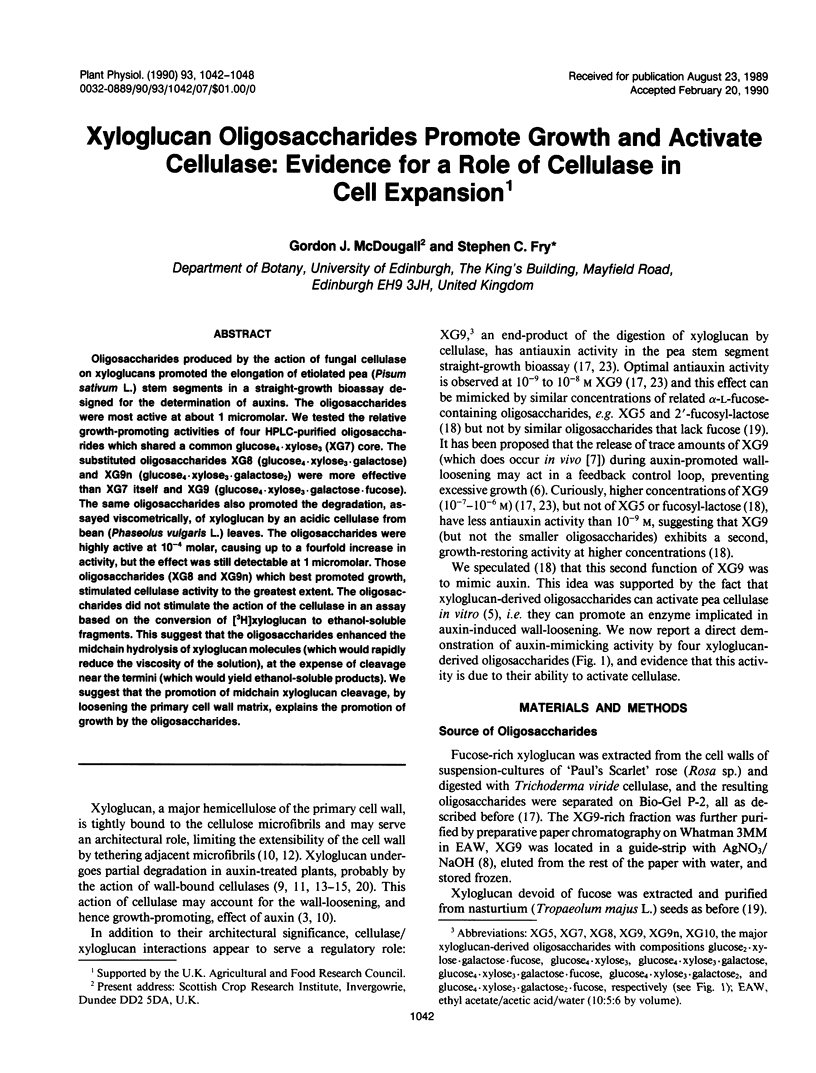

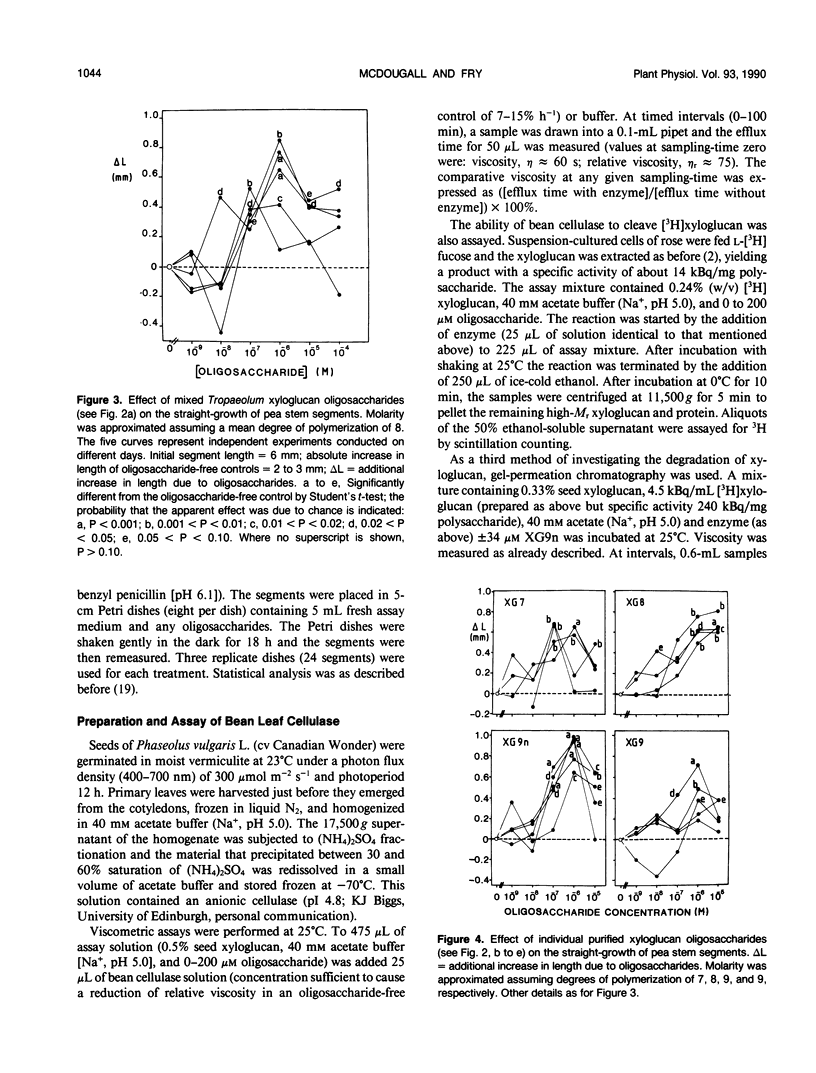
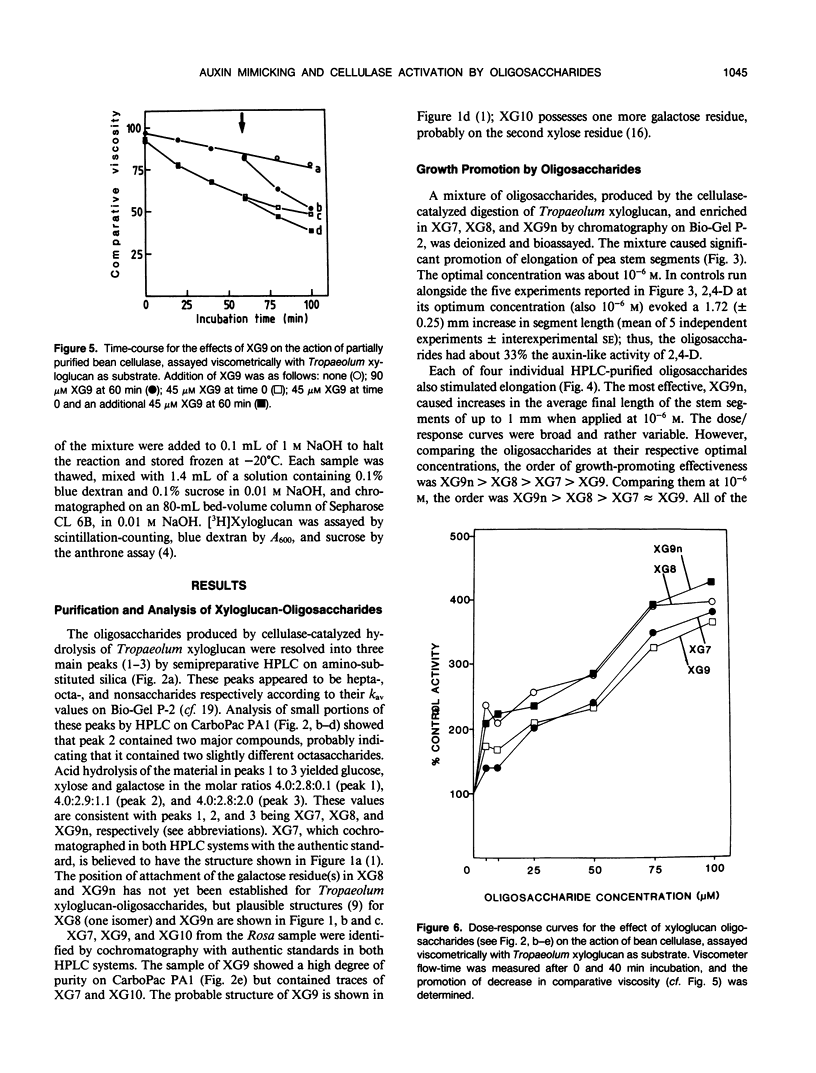
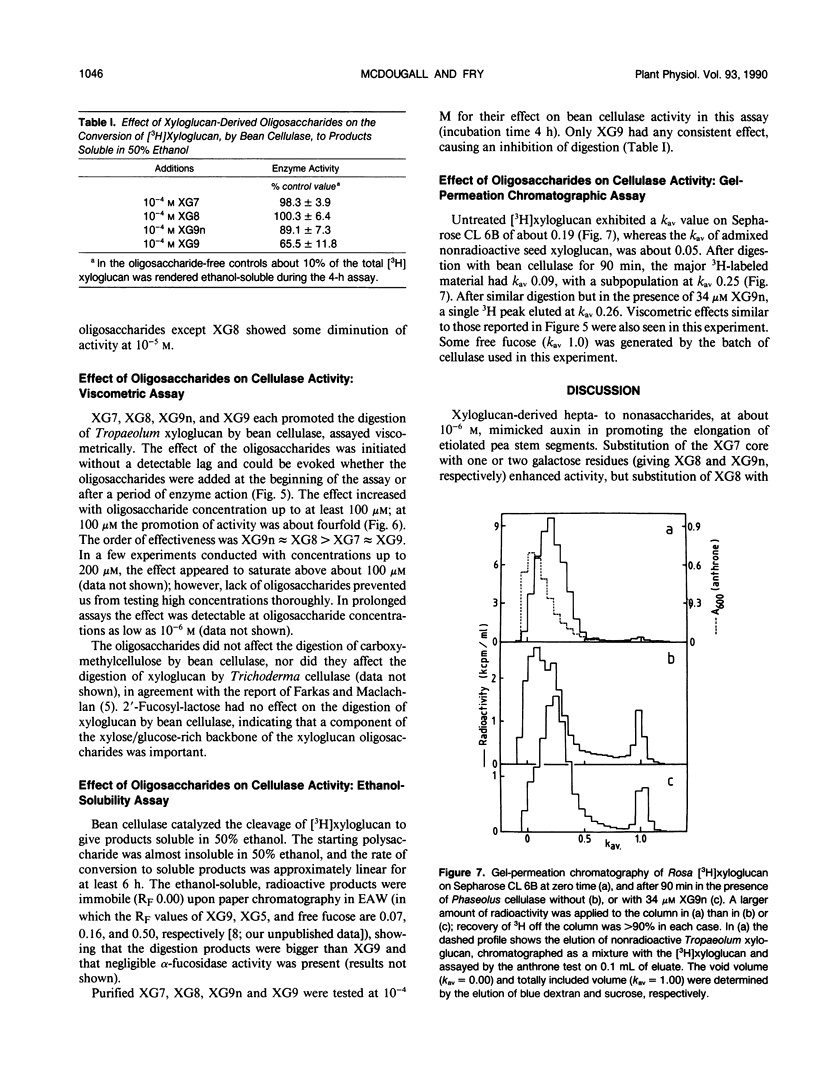
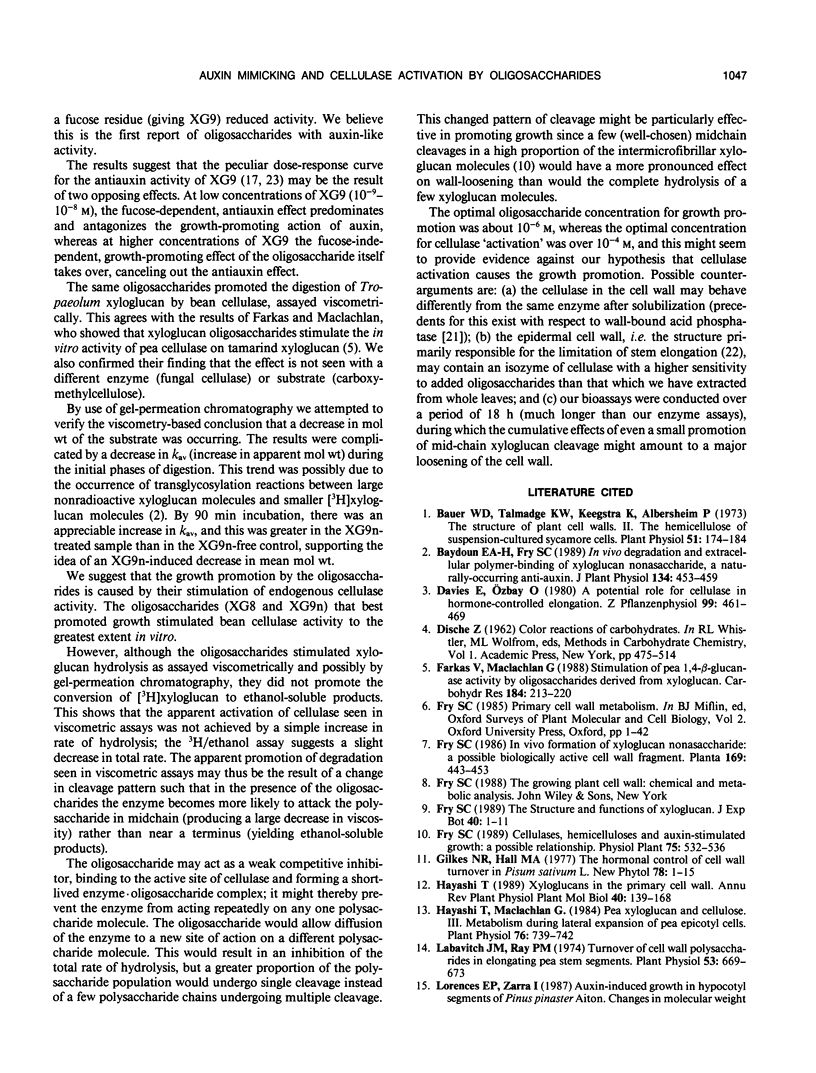
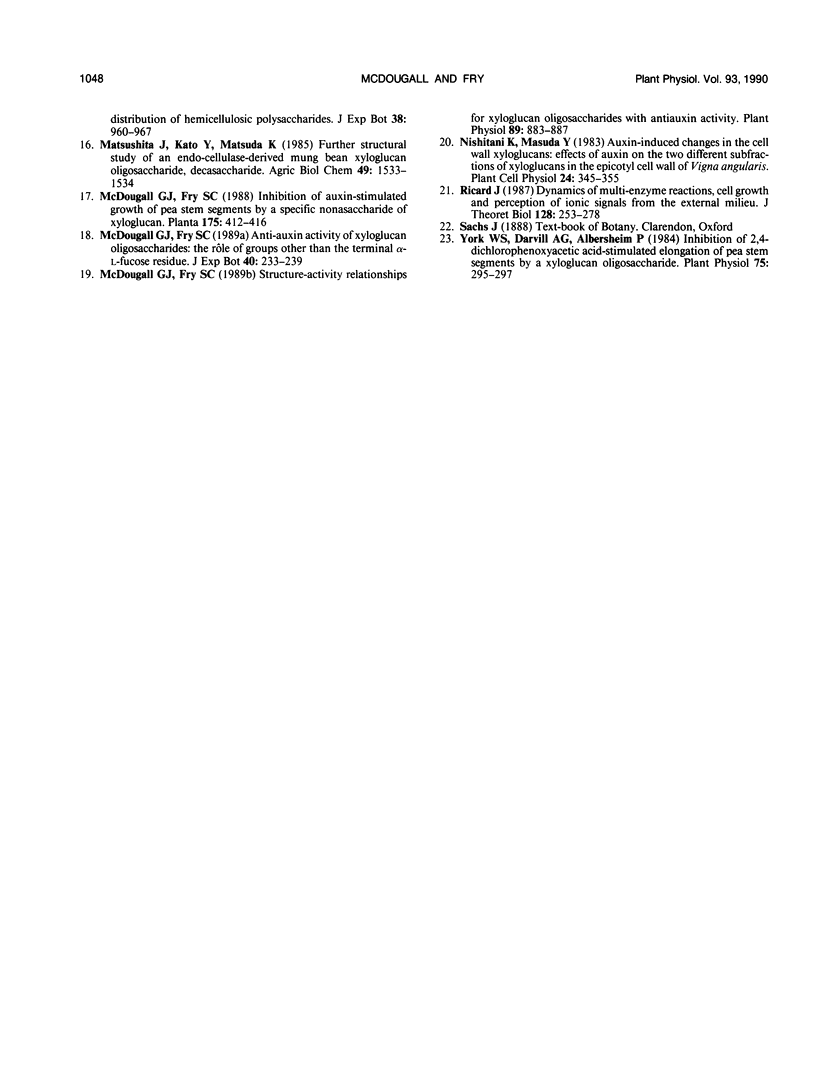
Selected References
These references are in PubMed. This may not be the complete list of references from this article.
- Bauer W. D., Talmadge K. W., Keegstra K., Albersheim P. The Structure of Plant Cell Walls: II. The Hemicellulose of the Walls of Suspension-cultured Sycamore Cells. Plant Physiol. 1973 Jan;51(1):174–187. doi: 10.1104/pp.51.1.174. [DOI] [PMC free article] [PubMed] [Google Scholar]
- Hayashi T., Maclachlan G. Pea Xyloglucan and Cellulose : III. Metabolism during Lateral Expansion of Pea Epicotyl Cells. Plant Physiol. 1984 Nov;76(3):739–742. doi: 10.1104/pp.76.3.739. [DOI] [PMC free article] [PubMed] [Google Scholar]
- Labavitch J. M., Ray P. M. Turnover of cell wall polysaccharides in elongating pea stem segments. Plant Physiol. 1974 May;53(5):669–673. doi: 10.1104/pp.53.5.669. [DOI] [PMC free article] [PubMed] [Google Scholar]
- McDougall G. J., Fry S. C. Structure-activity relationships for xyloglucan oligosaccharides with antiauxin activity. Plant Physiol. 1989 Mar;89(3):883–887. doi: 10.1104/pp.89.3.883. [DOI] [PMC free article] [PubMed] [Google Scholar]
- York W. S., Darvill A. G., Albersheim P. Inhibition of 2,4-dichlorophenoxyacetic Acid-stimulated elongation of pea stem segments by a xyloglucan oligosaccharide. Plant Physiol. 1984 Jun;75(2):295–297. doi: 10.1104/pp.75.2.295. [DOI] [PMC free article] [PubMed] [Google Scholar]


